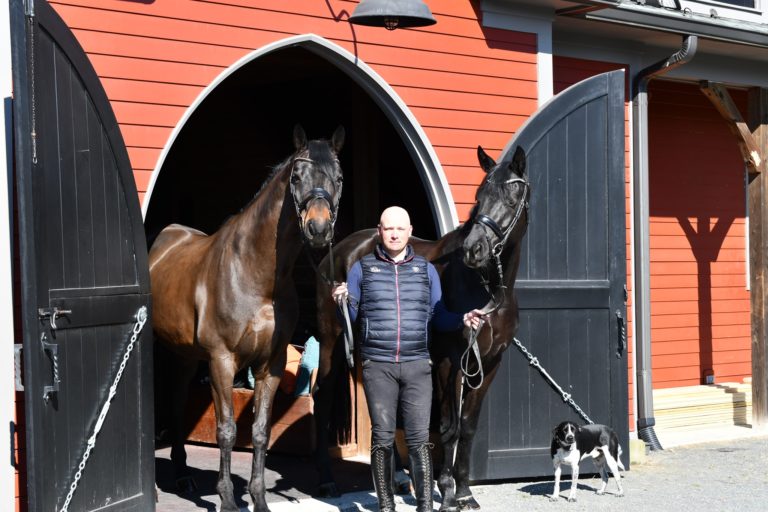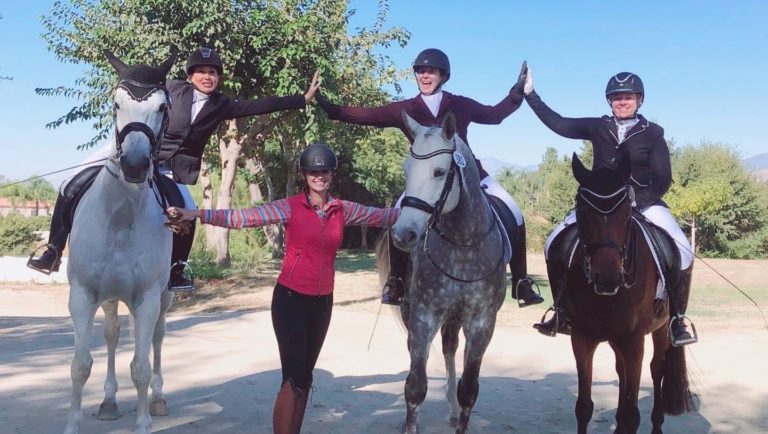It is important for a rider to be able to coordinate the muscles in her body perfectly, as a whole system. To achieve this, some muscles must lengthen while others must shorten and connect. To begin this process of coordination, it is best to start from a neutral position. Unfortunately, the average person’s lifestyle typically requires a lot of time spent in a flexed position: hunched over a desk or over a broom, sweeping the stable aisle. Muscles and fascia can get locked and shortened by overuse or injury, which makes a neutral position difficult to obtain, so it is important that before we focus on engaging too much of the body, we lengthen and loosen the overly tight parts first.
Sometimes our ability to stretch can be limited if a muscle contains knots, or “trigger points.” These trigger points make it more difficult for the muscle to work to its full potential. Trigger points can restrict the range of movement of a muscle or even trap nerves. Also, if a muscle isn’t functioning efficiently, your body might compensate by recruiting other muscles to join in the effort. It is often necessary to release these trigger points before you can reap the benefits of stretching.
To Release Trigger Points
Use a foam roller or small ball to release some of these common trigger points: glutes, calves, hip flexors and back. Remember to avoid rolling on joints. This is also good to do after you ride to help muscles return to a neutral state, especially if you ride a number of horses or if you have known injuries, which means your body’s alignment is probably less than perfect. Once you have eliminated these knots and can stretch more effectively, be careful not to overstretch. Stretching Exercises
It is best to stretch often, but in small increments. You are better to do a little bit everyday to notice lengthening in your muscles over time, rather than binge stretching once or twice a week. This kind of stretching can lead to strains and injury to tendons and ligaments. Following are a few stretches that will help with common overly tight muscles.


Pec Stretch: This stretch targets the front of your chest to counteract any tendency to hunch. You can also do this on the roller, lying with your back along its length and your pelvis and head both resting on it, knees bent and feet flat on the floor. Let your arms relax next to you on the ground. Stabilize your shoulder joint so you can target the correct muscle. Make sure you don’t just flop your chest open. Keep the back of your ribs well connected to the roller.

Knee Openings on Roller: This exercise will help neutralize your pelvis and allow your sacroiliac joints to settle and unlock. Lie on the roller as described in the previous exercise. Switch on your core muscles and begin with your knees and feet hip-joint-width apart. Drop one knee out to the side, but only as far as you can remain straight and stable on the roller. Watch that when you drop one knee out, the other remains aligned and doesn’t drop out slightly to counterbalance.

Hip Mobilizers: Unlocking your hips helps to create a seat that can swing with your horse’s back. Stretching your inner thighs, hamstrings (backs of your thighs) and glutes with a theraband can help warm up your hip joints to prepare them for riding.
Lie on your back and loop the band around one foot and stretch your leg above you until you can feel a little pressure through the back of it. Maintain a neutral spine, with the tailbone well anchored to the ground, supported by your core and with relaxed feet, so you don’t just stretch your spine or your sciatic nerve. Next, take your leg out to the side, keeping both shoulders on the ground and the opposite side of your pelvis anchored to the ground, so that you are able to stretch your inner thigh.
Finally, take your leg across your body to stretch your glutes and outside of your thigh. Keep it flowing and don’t overdo it!

Rebecca Ashton is a qualified Pilates instructor, a British Horse Society-trained instructor and an Equestrian Australia-accredited dressage coach. She has competed through Intermediaire II, working with riders such as Anky van Grunsven and earning championship titles in the small tour. She lives in Australia and teaches clinics internationally (equestelite.com).












